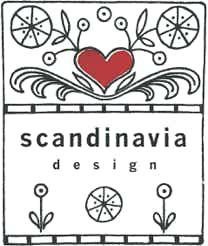15% off with DESIGN15

The PK4 lounge chair, first reissued by Fritz Hansen in 2023, is one of Poul Kjærholm's earliest works, designed in 1952 when he had just graduated from the Danish School of Arts and Crafts in Copenhagen.
The PK4 lounge chair already concentrates all the stylistic fundamentals of its author, with his love of geometric forms combined with natural materials. It consists of seven pieces of tubular steel welded together to form a frame on which a single long halyard is stretched.
The result is a remarkable lightness and balance, a mixture of complexity and visual simplicity, at the frontier of art and design. It is available in three versions: brushed stainless steel with natural or black halyard, or black powder coated steel with natural halyard.
The optional seat cushion is an addition: "Halyard is a beautiful material, but we wanted to create an option to make the seat slightly more comfortable," notes Marie-Louise Høstbo, creative director at Fritz Hansen. "The thin circular cushion adds to the graphic look of PK4, and the materials used are inspired by Kjærholm's habit of working with canvas and leather. When you add an element to a historical design, it is important to show respect. With this removable cushion, the profile of the chair remains perfectly defined.
Available in natural canvas, black canvas and black Grace leather, the cushions cannot be sold separately.
Thomas Kjærholm, son of the late designer, and intimately involved in the management of the Kjærholm archive: "I think it is fair to consider PK4 as a further exploration of his studies, the result of an experimental phase during which he was full of curiosity. This chair certainly establishes a relationship with the PK25, and later with the PK22 chair.
Dimensions W62,5 x D74,5 x H72 cm – Seat height 38 cm
Materials Stainless steel base, Seat and backrest flagyard in linen and nylon
PK4 classic
(without seat cushion)
natural cord + brushed stainless steel
natural cord + black stainless steel
black cord + brushed stainless steel
PK4 with seat cushion
black / steel
+ natural canvas
black / steel
+ black canvas
black / steel
+ Grace black leather
natural / steel
+ natural canvas
natural / steel
+ black
natural / steel
+ Grace black leather
natural / black steel
+ natural canvas
natural / black steel
+ black canvas
natural / black steel
+ Grace black leather
Poul Kjærholm

Acclaimed for his distinctive style of furniture design, Poul Kjaerholm was born in Øster Vrå, Denmark in 1929. His pieces are considered to contain a minimalist and articulated form, all in relief with a style that is still famous around the world.
From modest beginnings as a cabinetmaker apprentice at the Gronbech workshop in 1948, Kjaerholm continued to forge his ideology at the Danish School of Arts and Crafts in Copenhagen. Far from shunning the majority of his Scandinavian counterparts, the Dane chose steel as the main material rather than wood. "The potential of steel is not the only thing that interests me, the refraction of light on its surface is an important part of my artistic work. "
Awarded the prestigious Lunning Prize in 1958 and the Trennali Grand Prix in Milan in 1960, Kjaerholm's drawings continue to be featured in the permanent collections of the New York Museum of Modern Art, the Victoria and Albert Museum in London. in many other museums across Denmark, Norway, Sweden and Germany.



































